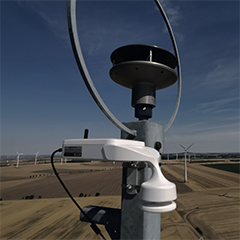Wind industry business models are shifting their focus. They used to be mainly driven by financial aspects of the business plan and the debt used to finance it, while technical operations, often subcontracted, came in second place. The priority of the wind industry was to ensure robust turbines with a high degree of availability, with performance being considered secondary.
This happened mainly for three reasons:
1. High electricity resale prices were guaranteeing comfortable margins.
2. Technical skills were not always available or easy to acquire by the owners and asset managers
3. Digital data was of poor quality, often difficult to use because it was controlled by the turbine manufacturers.
The gradual disappearance of feed-in tariffs and the implementation of reverse auction systems are giving the market a different dynamic, with the main consequence being a significant drop in the resale price of electricity. Average prices have decreased by 50% in the last 8 years, directly impacting the wind farms Return On Investment (ROI).
Nevertheless, this drop in the price of electricity is an excellent opportunity for the industry, as it makes wind energy more competitive within the energy mix. The influx of capital has been unstoppable, and has even led to a sharp increase in the selling price of wind farms already in operation.
Patrick Pouyanné, CEO of Total Group, a major investor in renewables, advocated recently, that producing 1 GW of electricity requires USD 1 Billion investment. Such a heavy investment is partially compensated by the low cost of money, but this dynamic could change if the capital cost rises as all return on investments will need to increase as well.
So even if the wind industry is still boosted by a very cheap capital, the decline in wind farm yields cannot be forever compensated for by the low cost of debt. Focusing on machine performance is a gamechanger for major players and a key power factor to go and look for bigger production margins, more in line with the new business model.
One of the answers provided by manufacturers today is the race towards turbine sizes. Especially in the rapidly expanding offshore market where 10MW turbines was the target a couple of years ago, whereas today we look at 14MW machines, and tomorrow 20MW ones. However, lower buying price per MW at installation does not solve the problem of operational performance. In fact, every additional percent of AEP gain has way more impact today than 4 years ago, 5% more production yielding 10% in annual Cash Flow to Equity.
Another answer lies in Data. Its quest even becoming the new Eldorado. But many challenges await the data diggers.
First, monitoring and improving the performance of wind farms require access to large volumes and quality of data, paired with powerful data computing, in order to establish large-scale processing. Despite many announcements and marketing messages, the wind energy sector remains relatively less digitized compared to other industries. Making the digital switch isn’t easy for big organizations and will be driven by innovative, native digital companies.






























